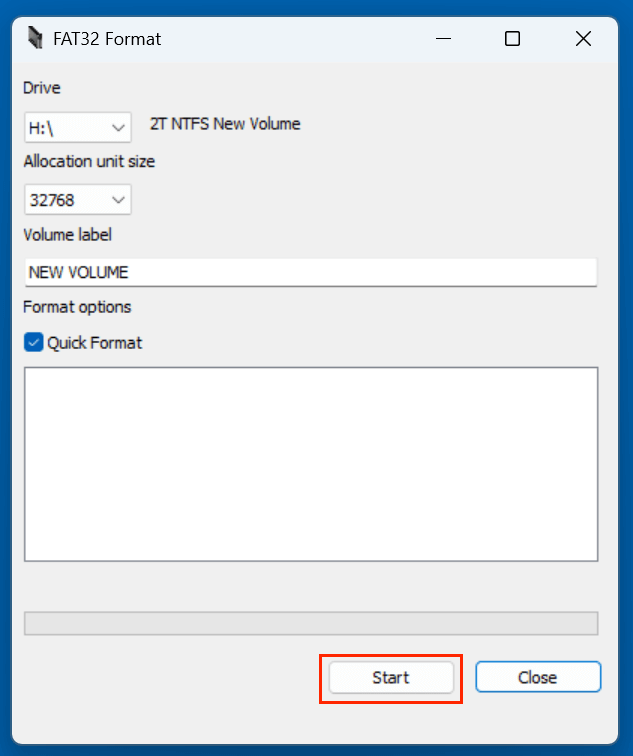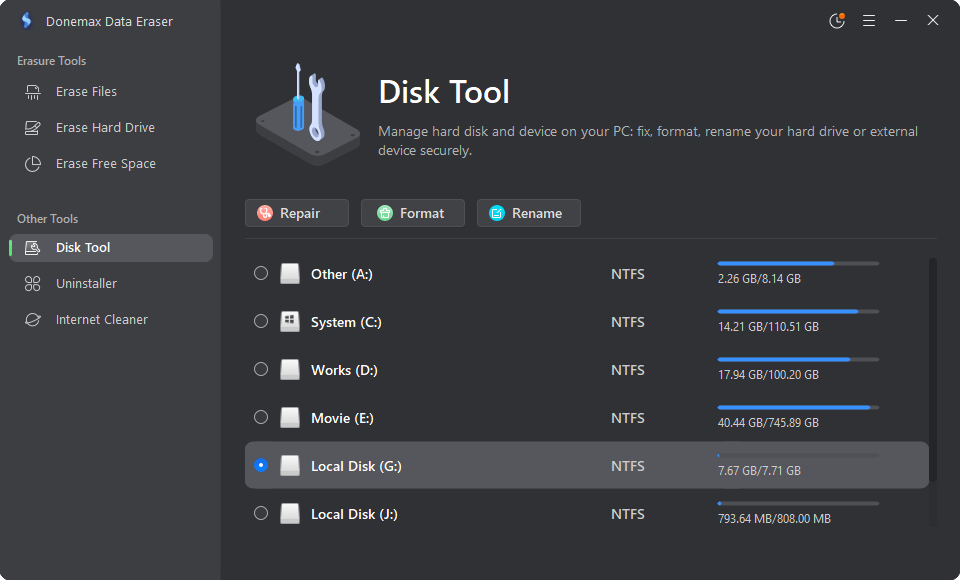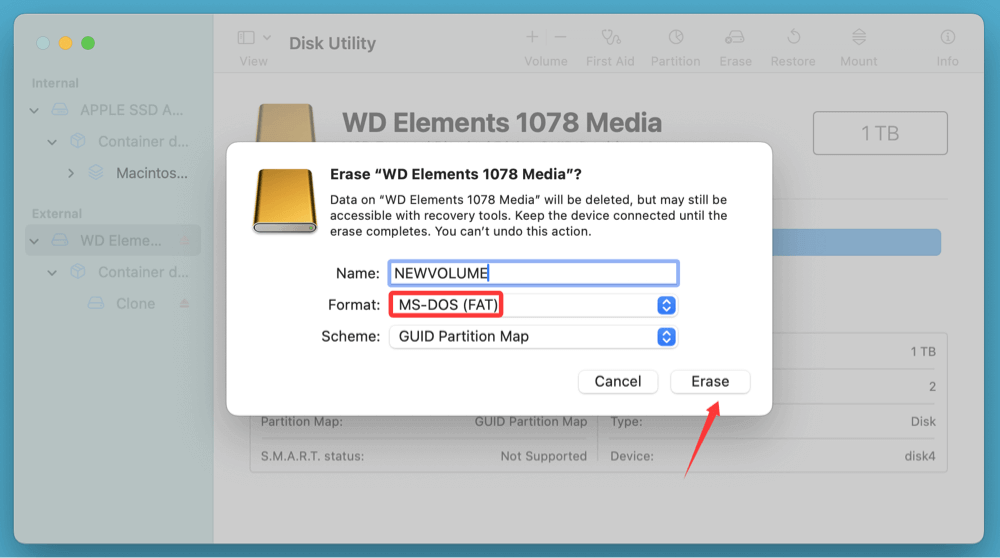PAGE CONTENT:
Solid State Drives (SSDs) have rapidly become the standard storage device in modern computing due to their speed, durability, and reliability. When setting up a new SSD or repurposing an old one, users often face a question regarding file systems: Can an SSD be formatted to FAT32? While FAT32 is one of the oldest and most compatible file systems available, it's not typically recommended for SSDs. However, the answer to the core question is yes - you can format an SSD to FAT32, though there are some important caveats to understand.
In this article, we'll walk through what FAT32 is, how it compares with other file systems, how to format an SSD to FAT32, and when (if ever) it makes sense to do so.
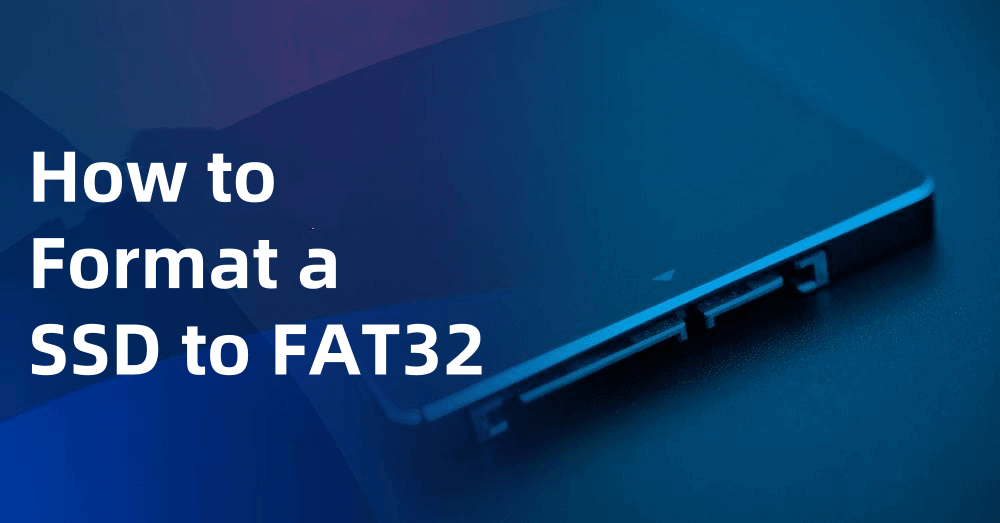
Understanding the FAT32 File System
A Brief History of FAT32
FAT32, short for File Allocation Table 32, was introduced by Microsoft in 1996 with Windows 95 OSR2. It was a major improvement over its predecessors (FAT12 and FAT16), offering larger partition support and better efficiency with disk space.
Key Characteristics of FAT32:
- Maximum file size: 4 GB per individual file
- Maximum partition size: 2 TB (in Windows), though up to 8 TB theoretically
- No journaling: Does not log changes, which affects data integrity
- High compatibility: Works with Windows, macOS, Linux, gaming consoles, and embedded systems
Because of these characteristics, FAT32 is widely used for flash drives, memory cards, and other removable storage media that prioritize cross-platform compatibility.
Common File Systems Used in SSDs
SSDs are generally formatted using more advanced file systems like:
- NTFS (New Technology File System) – Preferred on Windows for internal drives, offers journaling, large file support, and advanced permissions.
- exFAT (Extended File Allocation Table) – Modern FAT alternative designed for flash storage, supports large files and is compatible with Windows and macOS.
- APFS (Apple File System) – Used on macOS and iOS devices.
- EXT4 (Fourth Extended Filesystem) – Common on Linux-based systems.
These file systems are designed to take advantage of SSDs' capabilities, such as fast data access and support for modern features like TRIM and journaling.
Can You Format an SSD to FAT32?
Short Answer: Yes
Technically, any SSD can be formatted to FAT32. There is nothing in the technology of SSDs that prevents them from using the FAT32 file system. However, Windows has a built-in limitation: you cannot format drives larger than 32 GB to FAT32 using built-in tools like File Explorer or Disk Management.
To format larger SSDs (e.g., 128GB, 256GB, 1TB) to FAT32, you'll need third-party software or command-line utilities.
Why FAT32 Isn't Commonly Used on SSDs
1. Performance Limitations
FAT32 lacks modern optimizations for data handling, such as journaling and indexing. This leads to slower file access speeds compared to NTFS or exFAT, especially on larger drives.
2. File Size Limitation
The maximum file size on FAT32 is 4 GB. This makes it unsuitable for storing high-resolution videos, large game files, or system backups.
3. Lack of Journaling
FAT32 doesn't track changes before they're written to disk. If your system crashes during a file write, it may result in data corruption. File systems like NTFS and APFS include journaling to prevent this.
4. Wear Leveling Issues
SSDs rely on wear leveling to extend their lifespan. File systems like NTFS are better suited for this, while FAT32's frequent writes to the same file table areas can degrade SSD performance over time.
How to Format an SSD to FAT32 (Step-by-Step)
Normally, you can't format a SSD to FAT32 via File Explorer or Disk Management. If you still want to format your SSD to FAT32, here's how to do it on various operating systems:
Format a SSD to FAT32 on Windows
Option 1: Use FAT32 Format by Ridgecrop
- Download the FAT32 Format utility from Ridgecrop Consultants: http://www.ridgecrop.demon.co.uk/index.htm?fat32format.htm
- Run the tool as administrator.
- Select your SSD from the drop-down list.
- Click "Start" to begin formatting.
![Format a SSD to FAT32]()
Option 2: Use Donemax Data Eraser
- Install Donemax Data Eraser after downloading it.
- Open the program, choose Disk Manager, and locate your SSD.
- Select the SSD, click Format.
![Donemax Data Eraser]()
- Choose FAT32 as the file system and format it.
Option 3: Use Command Line (Only for ≤32GB drives)
format X: /FS:FAT32
Replace X: with the correct drive letter. This works for drives up to 32GB only.
Format a SSD to FAT32 on macOS
- Open Disk Utility from Utilities via Applications.
- Select your SSD from the sidebar.
- Click Erase.
- From the Format dropdown, choose MS-DOS (FAT).
- Name your drive and click Erase.
![Format a SSD to FAT32]()
💡 Note: macOS labels both FAT16 and FAT32 as "MS-DOS (FAT)," so ensure the partition size is appropriate for FAT32.
Format a SSD to FAT32 on Linux (Using GParted or Terminal)
Using GParted:
- Install GParted using your package manager.
- Open GParted and select your SSD.
- Right-click the partition and choose Format to → fat32.
- Apply changes.
Using Terminal:
sudo mkfs.vfat -F 32 /dev/sdX1
Replace /dev/sdX1 with your SSD's partition identifier. Make sure you back up data beforehand.
When Should You Use FAT32 on an SSD?
Although FAT32 isn't ideal for SSDs, there are a few scenarios where it still makes sense:
1. Device Compatibility
Some legacy devices (e.g., digital cameras, car media systems, and routers) only support FAT32. If you're using your SSD as an external drive with these systems, FAT32 might be your only option.
2. Bootable Media
FAT32 is often required for bootable media, especially for BIOS-based systems or tools like Rufus when creating bootable USBs.
3. Embedded Systems
Raspberry Pi and other embedded platforms sometimes require FAT32 for compatibility with certain OS loaders.
4. Dual Boot Systems
Some users set up FAT32 partitions to share files between Linux and Windows or to access the drive across platforms.
Pros and Cons of Using FAT32 on SSD
Pros:
- Universal Compatibility: Works across all major operating systems and devices.
- Simple Structure: Less overhead than NTFS or exFAT.
- Good for Legacy Systems: Required by many older platforms and embedded devices.
Cons:
- 4GB File Size Limit: Not suitable for large modern files.
- 2TB Partition Limit on Windows: Limited support for modern large SSDs.
- No Journaling: Increased risk of data loss during crashes.
- Not Optimized for SSDs: May cause unnecessary wear on SSD flash cells.
| Feature | FAT32 | NTFS | exFAT |
|---|---|---|---|
| Max File Size | 4 GB | 16 TB | 16 EB (theoretical) |
| Max Volume Size | 2 TB (Windows), 8 TB* | 256 TB | 128 PB |
| Journaling | - | Yes | - |
| OS Compatibility | (very high) | (Windows) / (macOS) | (Windows/macOS/Linux) |
| TRIM / SSD Optimization | - | Yes | Yes |
| Security (ACLs, Encryption) | - | Yes | - |
| Suitable for Boot Drives | (UEFI Legacy) | Yes | Yes |
| Best Use Case | Legacy or embedded use | Modern Windows usage | Cross-platform portable |
FAT32 has stood the test of time thanks to its simplicity and cross-platform support, but it's increasingly being relegated to niche use cases. On an SSD, where performance, reliability, and lifespan are paramount, FAT32 is often more of a liability than a benefit.
That said, if you absolutely need compatibility across older systems or devices that don't support exFAT or NTFS, and your SSD is not handling large files or intensive workloads, FAT32 can still be a viable option. Just proceed with caution and make sure it aligns with your intended usage.
FAT32 Alternatives Better Suited for SSDs
If you're not constrained by compatibility requirements, consider using one of these alternatives:
1. exFAT (Extended File Allocation Table)
- No file size or partition size limits (up to 128PB)
- Great compatibility (Windows, macOS, Linux with additional drivers)
- Ideal for external SSDs and flash drives
2. NTFS (New Technology File System)
- Accommodates huge files and sophisticated functions like encryption and file permissions.
- Great for Windows internal SSDs
- Less compatible with macOS (read-only without third-party tools)
3. EXT4
- Native Linux file system
- Advanced journaling and performance features
- Not directly readable by Windows/macOS without additional tools
4. APFS (Apple File System)
- Optimized for macOS and iOS devices
- Not compatible with Windows without third-party drivers
Important Considerations Before Formatting a SSD to FAT32
1. Backup Your Data
Formatting erases all contents of the drive. Always back up your important files before proceeding.
2. Know Your Purpose
Choose a file system based on how and where the SSD will be used. Compatibility should guide your decision.
3. Check Device Requirements
Before formatting to FAT32, ensure the device you intend to use the SSD with doesn’t support modern file systems like exFAT.
4. Use TRIM Support
Ensure your OS and file system support the TRIM command for SSDs, which helps manage unused space and maintain performance.
Recover Lost Data After Formatting a SSD to FAT32
Formatting the SSD to FAT32 will erase everything from the SSD. If you have lost important data due to formatting a SSD to FAT32, you can use data recovery program - such as Donemax Data Recovery to unformat the SSD and get all lost data back.
Step 1. Click Download button below to download Donemax Data Recovery, then install this data recovery software on your computer.
Step 2. Open Donemax Data Recovery, select the SSD to start data recovery.
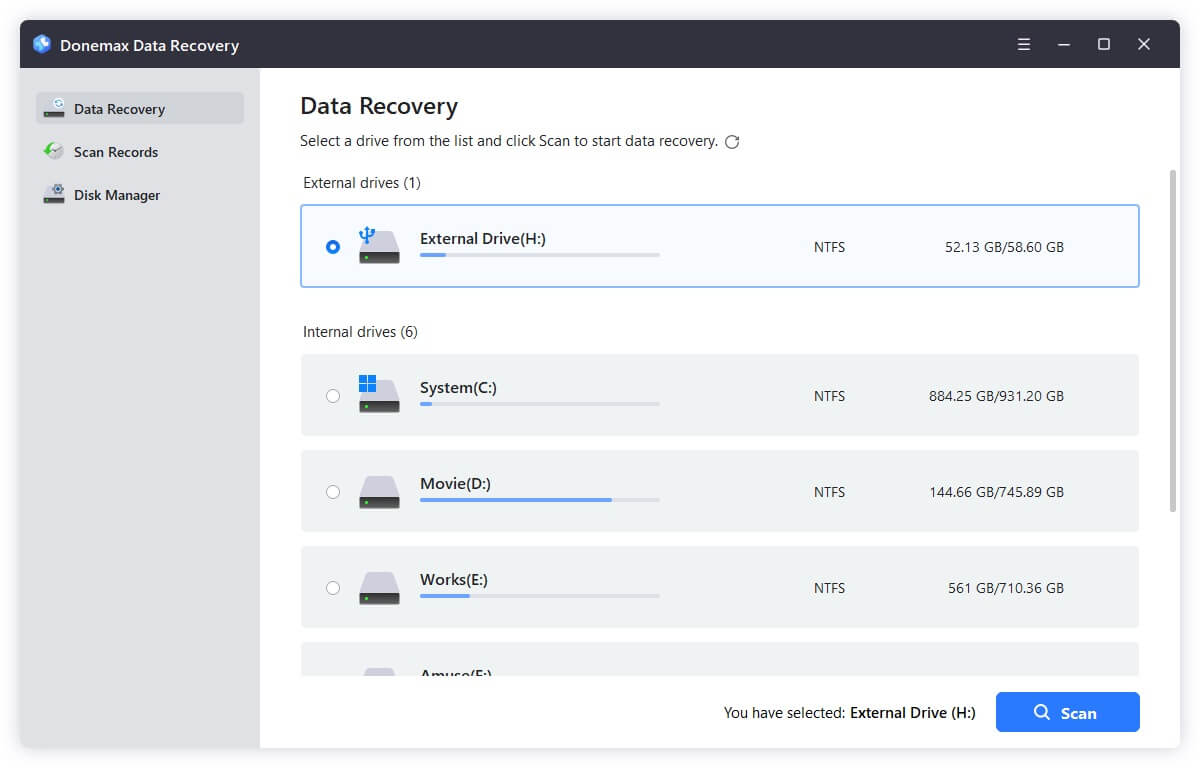
Step 3. Click on Scan button to deeply scan the formatted SSD and find all erased files.
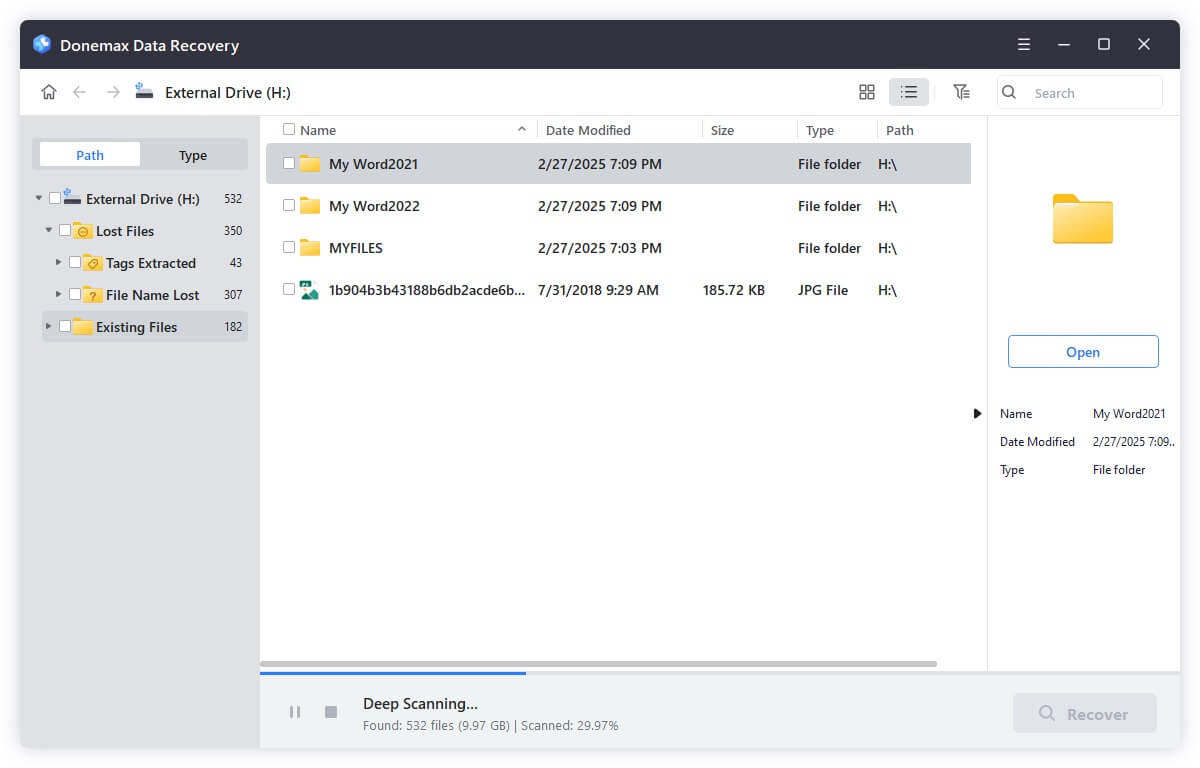
Step 4. After scan, you can preview all recoverable files. Then select the wanted files, click on Recover button to save them.
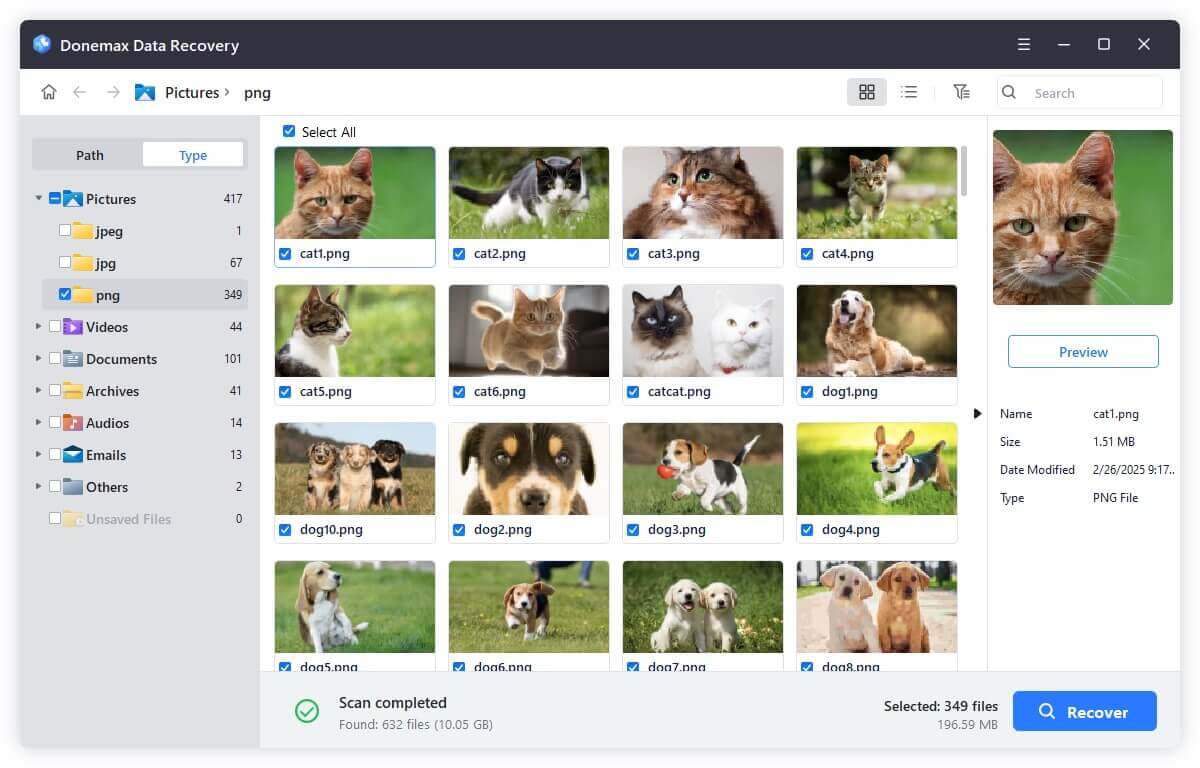
Conclusion
Yes, you can format an SSD to FAT32. The process is simple and supported across all major operating systems, though Windows may require third-party tools for partitions larger than 32GB. While FAT32 offers excellent cross-platform compatibility, it comes with significant limitations - particularly for modern storage needs.
Use FAT32 only when necessary - such as for compatibility with legacy devices or embedded systems. For most modern uses, exFAT or NTFS will serve you better, offering improved performance, fewer limitations, and better support for SSD-specific features.
Ultimately, the choice of file system depends on your use case. Understanding the trade-offs will help ensure you get the best performance, longevity, and compatibility from your SSD.
Related Articles
- Jan 14, 2025Best 6 Solutions to Fix SSD Is Unreadable
- Sep 15, 2025Upgrade Alienware Gaming Laptop SSD: A Complete Guide
- Mar 26, 2025MacBook SSD Data Recovery: A Comprehensive Guide
- Jul 19, 2024SSD Maintenance Tips: Protect SSD
- Apr 07, 2025How to Recover Data from SATA SSD? [3 Methods]
- Jan 14, 2025How to Fix Corrupted or Dead SSD Without Losing Data?

Steven
Steven has been a senior writer & editor of Donemax software since 2020. He's a super nerd and can't imagine the life without a computer. Over 6 years of experience of writing technical solutions and software tesing, he is passionate about providing solutions and tips for Windows and Mac users.

Gerhard Chou
In order to effectively solve the problems for our customers, every article and troubleshooting solution published on our website has been strictly tested and practiced. Our editors love researching and using computers and testing software, and are willing to help computer users with their problems

